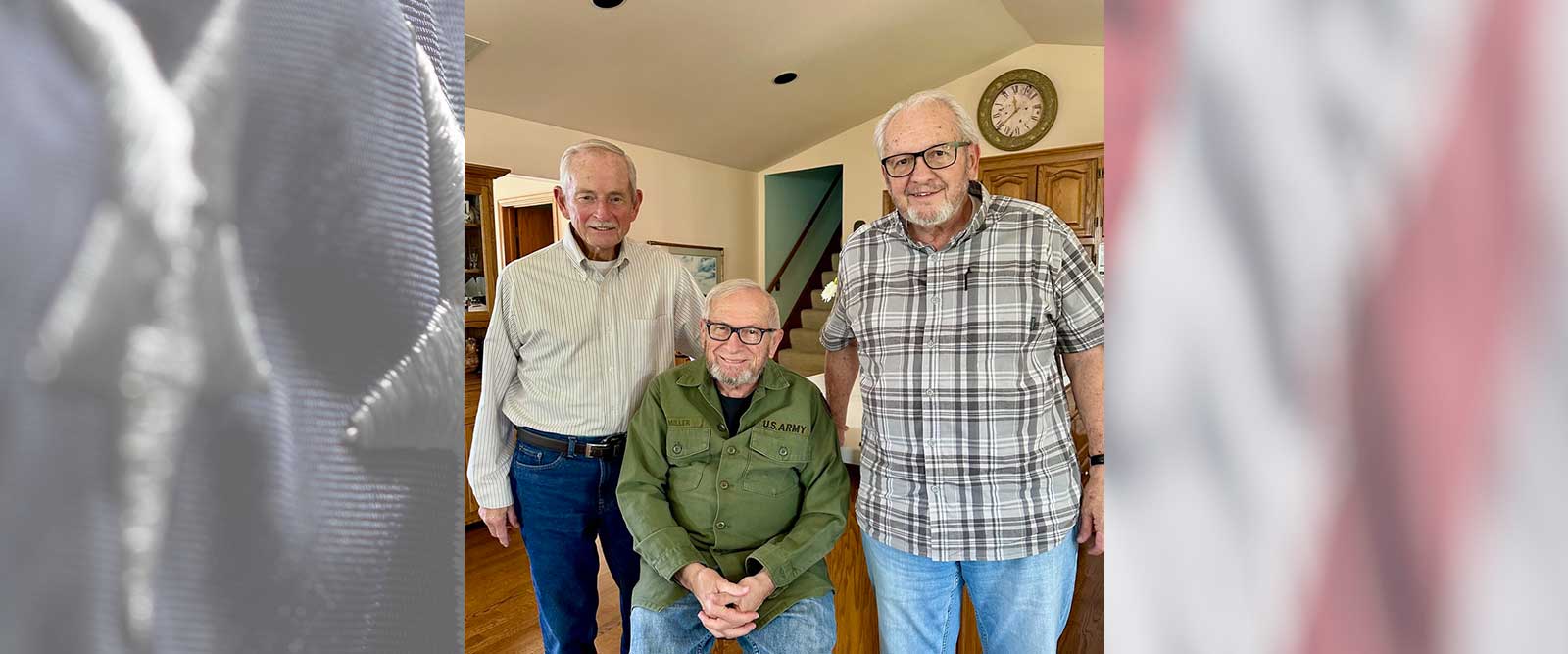Army Vietnam War Mokena, Oaklawn, and Franklin Park, IL Flight date: 07/24/24
By David Adams, Honor Flight Chicago Veteran Interview Volunteer
Arthur “Arty”, Charles “Charlie”, and Thomas “Tom” Miller grew up in a family of eleven on the Southside of Chicago. They had two younger brothers and six sisters. As fate would have it, all three graduated from high school in the mid-1960s with the draft nipping at their heels. One by one they accepted their fate and were inducted into the Army in October 1966, January 1967, and June 1967, respectively, and served essentially around the globe.
One would not be surprised to learn that the Miller family has a history of military service. Younger brother Danny joined the Army Reserves in the early ‘70s. Several of their brothers-in-law served in the Marine Corps. One at age 17, with his parents’ permission, joined the Army Air Corps during World War II. He flew as a bombardier in a B-17 completing 36 missions flying from a base in England.
Here is “the rest of the Miller Brothers’ story”.

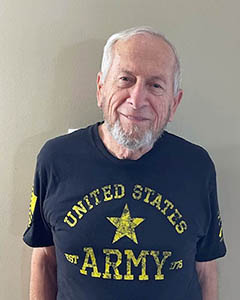
Arthur R. “Arty” Miller
Born in Chicago in December 1943, Arty spent one year at De La Salle high school located in the Bronzeville neighborhood on Chicago’s South Side. He completed high school at St. Francis Brothers School in Mt. Carmel, Wisconsin, a school of the Capuchin Order. Arty was intending to become a Brother. He graduated in 1962 after which he attended St. Norbert’s College, De Pere, Wisconsin for a time. Arty held a variety of jobs before being drafted in 1966.
His induction into the Army in October 1966 paved the way for Basic Training at Fort Campbell, Kentucky. Instead of obtaining Advance Infantry Training (AIT) he headed to Fort Knox with the MOS of 71B30 Clerk Typist. Assigned to HHC, 5th Battalion, 33rd Armor he admirably performed his duties until his discharge in October 1969. Within Headquarters he worked in S-3 Air which was in charge of operational planning and training for the battalion. Arty remembers that working in headquarters he pulled no guard duty for which he said he was “blessed”!
During his tour at Fort Knox both brothers Charlie and Tom got draft notices and entered the Army in January and June 1967. They were vulnerable for orders to Vietnam. Arty did get orders to Vietnam but, as referenced below, Charlie got his orders first. Therefore, Arty stayed at Fort Knox.
The Army encouraged Arty to “re-up”. His parents remarked, “why not stay in?” No deal! He received a letter of appreciation from the Chief of S-3 Air for his service at Fort Knox. In pertinent part it states: “Seldom was there a day when your interest in the welfare of those around you (sic) [was] not evidenced by your actions. Your continous (sic) to please and to assist in every way possible was a constant source of pride. Your ability to understand the intricacies of an S-3 shop was also truly remarkable, as you were often called upon to do work above and beyond that which would normally be expected.” He received an Honorable Discharge as an E-5 in October 1969 after three years’ service with no regrets whatsoever.
For a couple of years after returning home to Chicago, Arty worked several jobs including ones at a trucking company, District 1 of the Chicago Police Department, and Merrill Lynch. He eventually joined the Heat and Frost Insulators, Local 17 in 1978, which is now called “the original green energy specialists”. Arty retired after 25 years in this trade in 2004 but did not sit on his hands for long. He served as church custodian at St. Stephen Deacon and Martyr for fourteen years from 2007 to 2021. He was been married for 45 years with one son and a grandson. He and all of the Miller clan are very close and enjoy each other’s company. Indeed, his son Art will be his guardian on the Honor Flight.
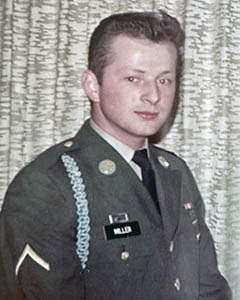
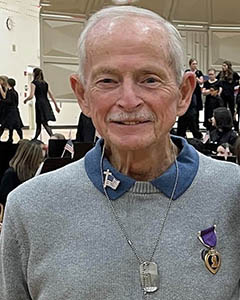
Charles Vincent “Charlie” Miller
His older brother went to De La Salle high school for a year. Charlie, rather, graduated from De La Salle, in the class of 1966. Sure enough he got his draft notice and was inducted into the Army on January 16, 1967. Basic training at Fort Jackson, South Carolina was followed by eight weeks of AIT. Trained as a basic infantry soldier his MOS was 11B20. He received orders to the 3rd Battalion 36th Infantry at Kirch-Göns, Germany for what should have been a 18-month tour. Germany, he remarks, was not “a good fit” and it was “too cold”. He requested a reassignment to Vietnam on July 6, 1967.
Processing his request took several months. His volunteering for Vietnam occurred before his brothers got their orders to Vietnam. The Army granted his request. He got his orders in February 1968, was home for a month, and then flew to Vietnam. He arrived in-country on March 15, 1968 at the tail end of the Tet Offensive. He joined C company, 2nd battalion of 14th Infantry. It’s base camp, Cu Chi, was located about 30 miles northwest of Saigon. The regiment operated close to and within the Iron Triangle. This area just north of Cu Chi was an active organizing center for the Viet Cong throughout the war and was laced with tunnels and underground military facilities.
As an infantry soldier he found himself “in the field all of the time”. He carried a mix of weapons but principally the M-16 and claymore mines. He recalls more than one significant operation. During one the company had settled in for the night and set up its defenses. Spaced around the perimeter of the camp were pairs soldiers at more or less even intervals. In the middle of the night “Charlie” attacked. The company’s machine gunner turned his weapon around 180 degrees from facing outward to fire across camp at the attackers and just over the heads of the company. The Lieutenant cried, “stop, stop shooting”. Whether machine gun fire drove off the enemy is uncertain although the engagement did not result in casualties.
Charlie and C company received an early morning surprise at a night ambush site. They found themselves, upon waking in daylight, in the middle of and on top of a vacated enemy base camp 30 kilometers northwest of Saigon. According to reputable after-action reports what they found were an underground fire direction center (FDC) for engaging American and South Vietnam forces, a large underground hospital, a Viet Cong mess hall and a storage area for explosives. In addition 200 pounds of explosives, an AK47 assault rifle, a 75mm recoilless cartridge, 3 RPG-2 rockets, 2 boosters, 50 rounds of small arms ammunition, an anti-tank mine, food, clothing and numerous documents were found. An outstanding success without a shot being fired!
August 9, 1968. On this date Charlie engaged in his final combat operation after only four and a half months in-country. Advancing through rice paddies the company came under enemy fire. Everyone took cover, most in shallow water. Charlie remembers that a Huey helicopter gunship engaged the enemy who were believed to be in the tree line surrounding the rice paddies. As the Huey circled the paddy, the door gunner fired his 50 caliber machine gun toward the American troops including Charlie. He caught a round in his left foot. Hit by friendly fire and pinned down by the enemy, he had to wait two hours for the “Dust-off” med evac chopper to fly him and a couple of other wounded to a MASH. On board the chopper and after lifting off, he heard the “plink, plink” sounds of rounds hitting the chopper’s lower fuselage where he was lying. “Oh no, I thought I was in a safe place.”
Arriving at a MASH, Charlie was prepped for surgery. Lying on a gurney, covered only by a sheet, the Chaplain approached him intending to give him Last Rites. Charlie said, “I don’t need that!” The Chaplain replied, “We do it for everyone.” Charlie suffered the near “loss of left little toe, and open fracture of left, fourth metatarsal” according to his medical records. The Army surgeon asked if he wanted the toe “on or off?” “On”, he replied. Charlie instructed the Army not to inform his mother of the nature of his wounds. He would do that himself.
He spent four months in rehabilitation: first a week in the 249th General Hospital, Camp Drake, Japan followed by skin graft medical treatment and extensive rehabilitation at Fort Riley, Kansas. When he arrived back “in the world” in August, he had only his dog tags around his neck and none of his personal gear. What he carried into that last battle stayed in the rice paddies and his other gear at Cu Chi. Charlie received an Honorable Discharge as an E-4 on November 27, 1968 with the Combat Infantryman’s Badge, Purple Heart, Vietnam Service Medal and Sharpshooter (Rifle). He says “I was glad to have had the opportunity to serve my country.”
Back home Charlie joined the same Heat and Frost Insulators, Local 17 in which his big brother Arty would eventually work. He proudly served 43 years from 1970 to 2013 lauded for “untiring effort and dedication to our craft” at his retirement. He has been married for 48 years and has two daughters and two grandsons. When asked if he has a hobby he replies, “My hobby is vacuuming and I have multiple vacuums that each has a name!” More seriously he says “the most important thing is family”. He loves to spend time with his wife, kids, grandkids, brothers, sisters, and nieces and nephews. Not the least, he loves old westerns – Bonanza, Gunsmoke, Rifleman, and, of course, John Wayne!
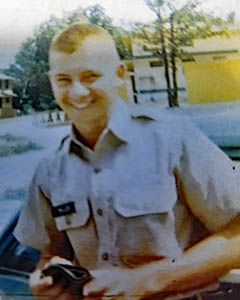
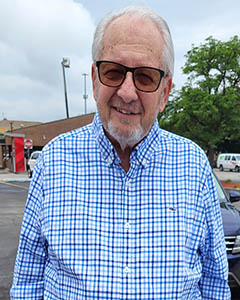
Thomas Sylvester “Tom” Miller
Tom graduated from De La Salle high school with the class of 1966, the same class as his brother Charlie. He joined Lathers Union Local 74 as an apprentice. Two brothers-in-law were also members of Local 74. Sure enough Tom received a draft notice while in the apprentice program. He learned that he could have a deferment for the length of time necessary for him to finish the program. Then he would have to join the Army. Instead of the deferment Tom decided “to get it over with” and was inducted on June 27, 1967.
Eight weeks of basic training at Fort Leonard Wood, Missouri was followed by AIT at Fort Gordon, Georgia. After twelve weeks there he qualified as a radio relay operator, MOS 31M20. With orders in hand for Vietnam, Tom took two weeks of leave at home then reported to Ft Lewis, Washington. At this time brother Charlie, serving a tour in Germany, had received orders for Vietnam. Due to the U.S. Department of Defense policy known as the “sole survivor policy”, intended to prevent multiple members of the same family from serving in a combat zone simultaneously, neither Tom nor Arty would not have to go the Vietnam. Invoking this option Charlie would serve in-country and Tom would not join him. Instead he was ordered to Camp Coiner near Seoul, Korea. He remembers that had he gone to Vietnam with his MOS he most likely would have been out in the field carrying communications gear with a whip antenna next to a platoon leader, an enticing target for the enemy.
Upon arrival in Korea on February 11, 1968, Tom joined the 304th Signal Battalion, Eighth Army. The world was all too well aware that the month before in January, just prior to his arrival, the seizure of the USS Pueblo occurred. North Korea captured the unarmed naval intelligence ship in international waters. It held the 83-man crew hostage for eleven months before releasing them. Tom recalls heightened tension on the Korean peninsula required a mandatory curfew from midnight to 7 a.m. Everyone was on full-time alert. His unit went into the field every other month for a two-week period. There it set up radio sites in preparation for possible escalation. He remembers the cold while sleeping in tents.
Back in camp in comfortable barracks, he worked in the battalion motor pool keeping the Deuce-and-a-Half trucks tuned-up. He also insured reliable operation of the radio equipment installed on the trucks. Tom recalls that because Camp Coiner was within 30 miles of the DMZ, thus North Korea, he earned “combat pay”. He took time to become acquainted with members of the Korean Augmentation to the US Army (KATUSA). With a pass in hand during free time he reports that “he and friends would head to the beach or wooded areas near camp where they would hang out, take pictures and shoot the breeze. Locals would be there selling Ice Cakes from wooden boxes.” He remembers he had as many Korean friends as Americans.
It was not all work and no play for Tom. He took advantage during his thirteen-month tour to see a Bob Hope show albeit from a distance from the stage and other USO shows. He liked “some of the Korean food” he ate off base. Rice wine which he describes as “creamy, milky, and powerful” and kimchi, the traditional side dish of salted and fermented vegetables, were among his favorites. Tom befriended a stray dog he named “Queenie” which would “come by my bed” in the barracks. Queenie became the unit’s mascot. He recognized this relationship as “a bit of home”.
Regarding his service Tom experienced a new city and culture, met new people and spent “good time with both the US and KATUSA guys he was stationed with”. Honorably discharged on February 11, 1969, he earned the National Defense Service Medal, Good Conduct Medal, Armed Forces Expeditionary Medal Korea, Expert M-16, and Sharpshooter M-14.
Back in Chicago he continued his apprenticeship in Lathers Union Local 74 which lasted two and a half years followed by two years in the trades as a journeyman. Next, using the GI Bill, Tom attended Wilbur Wright College earning an Associates degree and then Chicago State for his Bachelor of Arts degree. He also earned a Masters Degree in criminology along the way. With his teaching certificate in hand Tom taught carpentry and woodworking in the Chicago Public Schools for forty-one years from 1977 to 2018. He also pursued a PhD at Iowa State but did not complete the program.
Tom has two daughters and is relieved to take a breath! Regarding retirement he says, “In my spare time, I like to fish, I like to do woodworking, and I like to be outdoors in nature. However, I also enjoy an occasional trip to our local casino. Even though I am officially a retired high school teacher, I often do substitute teaching in grade school during the school year.”
This extraordinary trio of veterans will surely be awed by their more-than-earned Honor Flight to Washington with a hundred other Vietnam era veterans Enjoy every moment!



